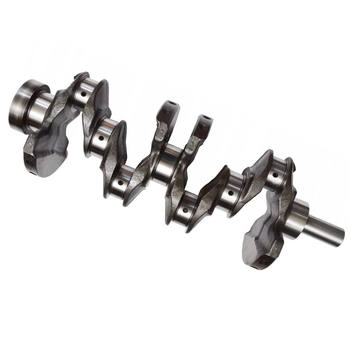Understanding Crankshaft Journal Polishing
To be honest, not many people give crankshaft journal polishing the attention it deserves. Frankly speaking, it is an extremely important aspect of engine maintenance. So, what exactly is it? In simple terms, crankshaft journal polishing is the process of removing material from the crankshaft's main and rod bearings to create a smooth and uniform surface.
Why is Crankshaft Journal Polishing Necessary?
Crankshaft journal polishing plays a crucial role in ensuring optimal engine performance. Over time, the bearings can become worn or damaged, leading to increased friction and heat. This can result in reduced engine efficiency, decreased fuel economy, and even engine failure. By polishing the crankshaft journals, you can restore the bearings to their original condition, reducing friction and heat, and improving engine performance.
The Benefits of Crankshaft Journal Polishing
If you're still on the fence about whether or not crankshaft journal polishing is worth the investment, consider the following benefits:
Improved Engine Performance
By reducing friction and heat, crankshaft journal polishing can significantly improve engine performance. This can lead to increased horsepower, torque, and acceleration.
Increased Fuel Efficiency
When your engine is running smoothly, it uses less fuel. By polishing the crankshaft journals, you can improve engine efficiency and reduce fuel consumption.
Reduced Engine Wear and Tear
Reducing friction and heat can also help to extend the life of your engine. By polishing the crankshaft journals, you can reduce wear and tear on the bearings, pistons, and other engine components.
The Crankshaft Journal Polishing Process
The crankshaft journal polishing process typically involves the following steps:
Inspection
Before polishing, the crankshaft must be thoroughly inspected for any damage or wear. This includes checking the bearings, journals, and counterweights.
Mounting and Centering
Once the crankshaft has been inspected, it is mounted on a special fixture and centered to ensure accurate polishing.
The polishing process involves using a series of abrasive stones or belts to remove material from the crankshaft journals. The amount of material removed is carefully controlled to ensure a smooth and uniform surface.
Finishing
After polishing, the crankshaft is cleaned and inspected to ensure that the surface is smooth and free of defects. It is then ready for reassembly.
Maintaining Your Polished Crankshaft Journals
To ensure that your polished crankshaft journals continue to perform at their best, it's important to follow proper engine maintenance practices. This includes regular oil changes, using high-quality oil and filters, and monitoring engine performance for any signs of wear or damage.
When to Re-Polish
While crankshaft journal polishing can significantly improve engine performance and extend the life of your engine, it's not a permanent solution. Depending on the condition of your engine and your driving habits, you may need to have the crankshaft journals re-polished every 50,000 to 100,000 miles.
Conclusion
In conclusion, crankshaft journal polishing is an extremely important aspect of engine maintenance. By reducing friction and heat, it can significantly improve engine performance, increase fuel efficiency, and reduce wear and tear on engine components. If you're looking to get the most out of your engine, it's definitely worth considering. And remember, regular maintenance and monitoring can help ensure that your polished crankshaft journals continue to perform at their best for years to come.




